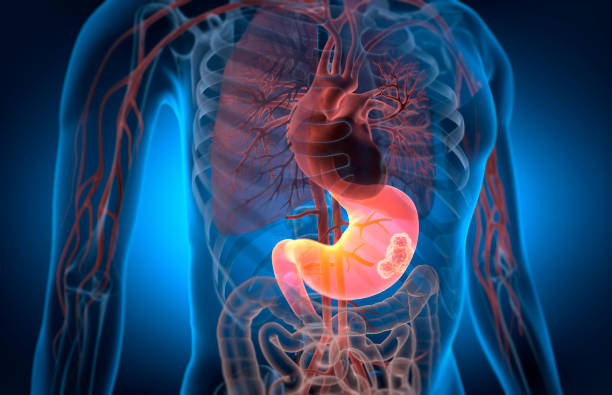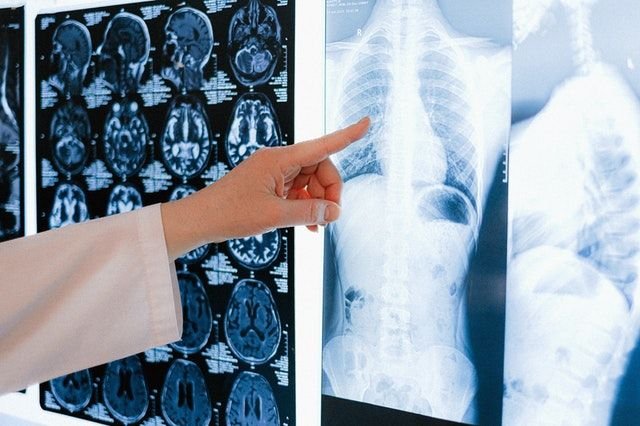Cancer is a word that carries an undeniable weight, a whisper of fear, uncertainty, and urgency. Among the many forms it can take, gastric cancer—commonly known as stomach cancer—remains one of the most serious. It is a disease that can quietly develop over years, often hiding behind subtle symptoms until it has progressed to an advanced stage. For many, the stomach is simply a place where food is digested. But for patients facing gastric cancer, it becomes the epicenter of a life-altering battle.
Globally, gastric cancer is the fifth most common cancer and the fourth leading cause of cancer-related deaths. While its incidence has declined in many Western countries over the past few decades, it remains alarmingly prevalent in parts of East Asia, Eastern Europe, and South America. Despite advances in medicine, gastric cancer continues to challenge physicians and researchers because of its silent progression and complex nature.
To truly understand gastric cancer is to explore its roots—what causes it, how it manifests, how we detect it, and most importantly, how we fight it.
Anatomy of the Stomach: The Silent Battleground
The stomach is not just a simple sack that holds food. It is a dynamic organ, part of the digestive system, and plays a critical role in breaking down nutrients. Positioned in the upper abdomen between the esophagus and the small intestine, the stomach secretes acid and enzymes to digest proteins, churns food into chyme, and prepares it for absorption in the intestines.
The stomach’s lining is made of several layers:
- The innermost mucosa (which produces stomach acid and digestive enzymes).
- The submucosa (a supportive connective tissue layer).
- The muscularis propria (which contracts to churn food).
- The serosa (the outer covering).
Gastric cancer typically begins in the mucosa and can penetrate through these layers as it progresses. The deeper the cancer spreads, the more dangerous it becomes, often reaching nearby lymph nodes or distant organs such as the liver, lungs, or bones.
Causes and Risk Factors of Gastric Cancer
No single cause can explain why gastric cancer develops. Like most cancers, it arises from a complex interaction between genetic predisposition, environmental exposures, lifestyle factors, and chronic medical conditions.
Helicobacter pylori Infection
One of the most significant discoveries in gastric cancer research is the role of Helicobacter pylori (H. pylori). This spiral-shaped bacterium colonizes the stomach lining and can persist for decades if untreated. While many infected people never develop cancer, chronic H. pylori infection increases the risk of gastritis, ulcers, and ultimately, gastric cancer. The bacterium triggers long-term inflammation, damages cells, and alters the stomach’s environment, creating fertile ground for malignant transformation.
Diet and Lifestyle Factors
Food plays a powerful role in shaping stomach health. Diets high in smoked, salted, and pickled foods—rich in nitrates and nitrites—are strongly linked to gastric cancer. These compounds can convert into carcinogens in the stomach’s acidic environment. Conversely, diets rich in fresh fruits, vegetables, and vitamin C are protective, as antioxidants reduce DNA damage.
Excessive alcohol consumption and smoking also amplify risk. Smoking not only introduces carcinogens directly but also worsens inflammation, while alcohol irritates the stomach lining and contributes to cell mutations.
Genetic and Familial Predisposition
Family history is another key factor. Individuals with a parent or sibling who has had gastric cancer face an elevated risk, suggesting inherited genetic susceptibility. Specific inherited syndromes, such as hereditary diffuse gastric cancer (HDGC) caused by mutations in the CDH1 gene, significantly increase lifetime risk.
Pre-existing Medical Conditions
Several conditions predispose individuals to gastric cancer:
- Chronic atrophic gastritis: Long-term inflammation that thins the stomach lining.
- Intestinal metaplasia: A precancerous condition where stomach lining cells transform into intestinal-like cells.
- Pernicious anemia: An autoimmune condition that reduces stomach acid and vitamin B12 absorption.
- Gastric polyps: Certain types, particularly adenomatous polyps, can develop into cancer.
Age, Gender, and Geography
Gastric cancer is more common in men than women, and risk increases with age, usually after 50. Geographically, high-incidence regions include Japan, Korea, China, and Chile, where both diet and genetic predisposition contribute to the elevated rates.
Symptoms of Gastric Cancer
One of the greatest challenges of gastric cancer is its stealth. In its early stages, it may cause little or no noticeable symptoms, leading many cases to be diagnosed late. However, as the cancer grows, symptoms emerge—often vague at first, easily mistaken for common digestive issues.
Early-Stage Symptoms
- Indigestion or persistent heartburn.
- A sense of bloating after eating small meals.
- Nausea or mild stomach discomfort.
- Loss of appetite.
These symptoms are easy to dismiss, which is why gastric cancer often progresses silently.
Advanced-Stage Symptoms
As the cancer spreads deeper, symptoms become more pronounced:
- Unexplained weight loss.
- Persistent abdominal pain or discomfort.
- Difficulty swallowing (if the tumor is near the junction of the stomach and esophagus).
- Vomiting, sometimes with blood.
- Black, tarry stools (a sign of internal bleeding).
- Fatigue and weakness due to anemia.
By the time these symptoms are obvious, the disease is often advanced, highlighting the importance of early screening in high-risk populations.
Diagnosis of Gastric Cancer
Timely and accurate diagnosis is essential for effective treatment. Detecting gastric cancer involves a combination of medical history, physical examination, imaging studies, and biopsy confirmation.
Endoscopy
The gold standard for diagnosis is upper gastrointestinal endoscopy (also known as gastroscopy). A flexible tube with a camera is inserted through the mouth, allowing doctors to directly visualize the stomach lining. If abnormalities are seen, tissue samples (biopsies) are taken for pathological analysis.
Imaging Studies
- CT scans help determine the extent of the cancer and whether it has spread to other organs.
- Endoscopic ultrasound (EUS) provides detailed images of the stomach wall and nearby lymph nodes, helping assess how deeply the cancer has invaded.
- PET scans can highlight areas of metabolic activity typical of cancer cells.
Laboratory Tests
Blood tests are not diagnostic on their own but can provide important clues. Patients often show anemia due to chronic bleeding. Tumor markers such as CEA (carcinoembryonic antigen) or CA 19-9 may be elevated, though they are not specific to gastric cancer.
Staging
Once diagnosed, gastric cancer is staged using the TNM system:
- T (Tumor): How deep the cancer has penetrated the stomach wall.
- N (Nodes): Whether nearby lymph nodes are affected.
- M (Metastasis): Whether the cancer has spread to distant organs.
Staging is crucial because it guides treatment decisions and predicts prognosis.
Treatment of Gastric Cancer
Treating gastric cancer requires a multifaceted approach, often combining surgery, chemotherapy, radiation therapy, targeted drugs, and immunotherapy. The choice of treatment depends on the stage, location, and overall health of the patient.
Surgery
For localized gastric cancer, surgery offers the best chance of cure. The type of surgery depends on the tumor’s location:
- Subtotal gastrectomy: Removal of part of the stomach, typically when cancer is confined to the lower portion.
- Total gastrectomy: Removal of the entire stomach, often necessary for more widespread tumors.
Surgeons also remove nearby lymph nodes to reduce recurrence risk. Advances in minimally invasive techniques, including laparoscopic and robotic surgery, have improved recovery times.
Chemotherapy
Chemotherapy uses drugs to kill rapidly dividing cancer cells. It can be administered:
- Before surgery (neoadjuvant chemotherapy) to shrink tumors.
- After surgery (adjuvant chemotherapy) to kill remaining cancer cells.
- As palliative treatment in advanced stages to relieve symptoms and extend life.
Common drugs include fluorouracil (5-FU), cisplatin, oxaliplatin, and capecitabine.
Radiation Therapy
Radiation therapy uses high-energy rays to destroy cancer cells. It is often combined with chemotherapy (chemoradiotherapy) to enhance effectiveness, particularly for tumors near the gastroesophageal junction.
Targeted Therapy
Targeted therapies focus on specific molecules that drive cancer growth:
- Trastuzumab: For tumors overexpressing the HER2 protein.
- Ramucirumab: Blocks blood vessel formation (angiogenesis) that tumors need to grow.
These treatments often have fewer side effects than conventional chemotherapy because they specifically target cancer-related pathways.
Immunotherapy
In recent years, immunotherapy has revolutionized cancer treatment. Drugs known as checkpoint inhibitors (e.g., pembrolizumab, nivolumab) help the immune system recognize and attack cancer cells. For certain patients, especially those with high microsatellite instability (MSI-H) tumors, immunotherapy can produce remarkable responses.
Palliative Care
For advanced gastric cancer, when cure is no longer possible, palliative care becomes essential. This focuses not on curing the disease but on improving quality of life—managing pain, controlling nausea, maintaining nutrition, and providing emotional support.
Prevention and Early Detection
Because gastric cancer is often diagnosed late, prevention and early detection are critical.
- Eradicating H. pylori infection with antibiotics reduces cancer risk, especially in high-risk regions.
- Dietary changes—reducing salt-preserved foods and increasing fresh fruits and vegetables—can lower incidence.
- Regular screenings with endoscopy in countries like Japan and Korea, where rates are high, have significantly improved early detection and survival.
Living with Gastric Cancer
Beyond the science and medicine, gastric cancer is a profoundly human experience. Patients face not only physical challenges but also emotional and psychological ones. Eating becomes difficult, body image changes, and fatigue often weighs heavily. The uncertainty of prognosis can stir fear, sadness, and anxiety.
Yet, stories of resilience abound. Support groups, counseling, and integrative therapies help patients cope. Advances in treatment continue to improve survival, offering hope where once there was little. Families, friends, and healthcare providers form vital support systems, reminding patients that they are not alone in their journey.
The Future of Gastric Cancer Care
Research is rapidly evolving, with new approaches offering hope:
- Liquid biopsies may allow earlier detection through blood tests that identify circulating tumor DNA.
- Personalized medicine tailors treatment to the genetic profile of each patient’s cancer.
- Vaccine research explores ways to prevent gastric cancer by targeting H. pylori or tumor-specific antigens.
With every discovery, the future of gastric cancer care moves closer to earlier detection, more effective treatments, and better quality of life for patients.
Conclusion: Confronting Gastric Cancer with Knowledge and Compassion
Gastric cancer is a formidable disease, but it is not invincible. Understanding its causes, recognizing its symptoms, diagnosing it with precision, and treating it with the best available tools are the keys to saving lives. Just as importantly, caring for those who face this battle with compassion, empathy, and dignity is part of the healing journey.
Health is never just the absence of illness—it is the presence of hope, strength, and resilience. And in the fight against gastric cancer, science and humanity walk hand in hand toward a future where this disease may no longer hold such power over our lives.






